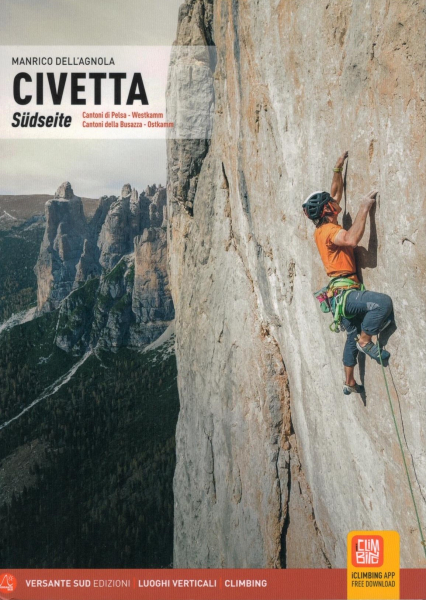alpin climbing guidebook Civetta Süsseite
The southern side of Civetta is a very complex mountain landscape. On topographical maps, the main massif resembles a giant claw with three prongs pointing south and one pointing north. The peaks in the south are lower, making access from this direction the easiest. However, there are still very high, vertical walls and rock formations made of compact limestone. Pointed pinnacles and needles, slender towers, chunky pillars, and isolated peaks characterize the entire Dolomites, but even the most famous among them are rather small landmarks compared to Torre Trieste (approx. 700 meters high) or the Busazza ridge (approx. 1100 meters high).
As you climb through the Mussaia valley, you get the impression that a veritable labyrinth of peaks and towers spreads out between these two huge towers – the so-called Cantoni di Pelsa and Cantoni della Busazza. In fact, it is possible to differentiate between them more from a visual than a geographical point of view. The Cantoni di Pelsa end before the huge pillars of Cima di Terranova, while the Cantoni della Busazza extend to the beginning of the rocky ridges that border the Van del Giazzer to the north. Seen from the front, however, both appear as a single structure.
Climbing in the Cantoni means plenty of sunshine, relatively short approaches, no problems with difficult descents or rapid weather changes, free climbing on good rock with almost always natural protection, and last but not least, a carefree life between ascents. But here you will also find high peaks over 3000 meters above sea level, very difficult routes, brittle rock ledges, unpleasant descents such as at Torre Trieste, or difficult walls such as the west face of Cima Busazza, which is over a thousand meters high, lies in the shade almost all day, and offers no possibility of airing out.
480 pages
Language: German
Edition: 2025
M. Dell'Agnola
Versante Sud












